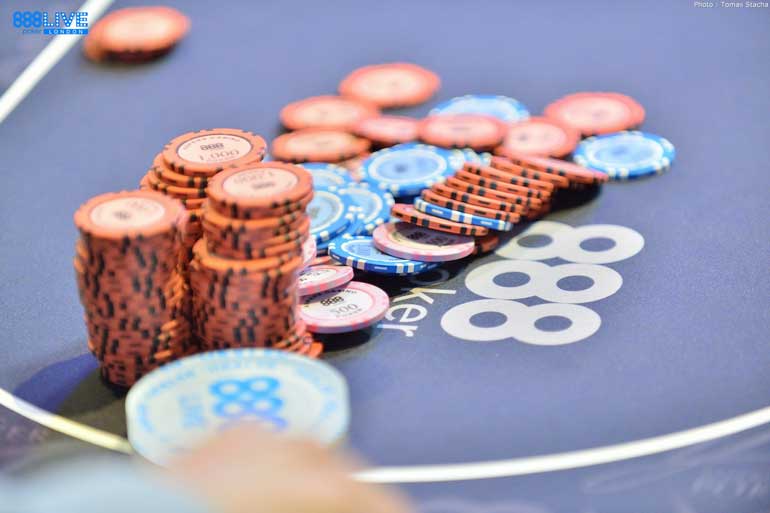I often get asked about poker tells and what means what at the poker table. Players wonder if there is some trick to staring into an opponent’s soul. Trying to figure out exactly which type of hand they have.
I generally find that the cards we hold are more important than physical tells. For example, if we get a bad starting hand in PLO, we should usually discard it.
We should do this no matter how well we understand our opponents.
Having said that, we want to use all the information that is available to us.
So, here are some of my quick tips on improving with poker tells.
What Is a ‘Poker Tell’?
In a live game, we are talking about any physical indicator that our opponent might hold a certain type of hand.
It could be at least one or all the 3 listed below -
- A nervous facial expression
- Trembling hands
- Different types of eye contact etc.

It’s true that sometimes players talk about ‘timing tells’ and ‘sizing tells’. But these types of tells are not exclusive to live games. They can play a role in making the best decisions in an online line-up.
What do Different Poker Tells Mean?
Here is the trick. Different poker tells can mean different things for different players. There is no simple guide such as if a player has trembling hands, then he is bluffing.
It might mean that, but it could mean the opposite.
To interpret our opponents’ tells successfully, we need to create a default ‘profile’ on each opponent. We must monitor how they act by default in every situation.
Say they act differently from their default profile. There might be useful information hiding just beneath the surface.
Formulating Opponent Profiles
The first time I sit down at a table, I won’t necessarily have a decent idea about my opponents’ play styles and tendencies.
Trying to use tells might be difficult. Aside from initial appearance (clothing etc., which can sometimes say quite a bit), we might be playing against complete unknowns.
After a few orbits, I’ll have a much better feel regarding how my opponents act by default. I can begin to notice potential deviations from this default profile.
The more we watch, the more we might focus in on particular actions. These ‘tells’ might be giving away information on each of our individual opponents.
Where to Look for Tells
Different opponents will give away various sorts of tells. (And they might mean completely separate things).
I have created a list of areas that you might pay attention to when looking for tells:
- Mouth. Relaxed and full lips? Or tight and pinched? Any nervous twitches or micro-changes in expression when certain cards fall? There is a reason that many poker players choose to cover their mouth with a hand.
- Eyes. Pupils dilated or constricted. What about gaze direction? Is Villain making eye contact or avoiding our gaze? Does Villain glance quickly at the effective stacks at any point or stare at the board?
- Apex. The moment when hole cards are lifted from the table (to see what we have been dealt). Is called the ‘apex’. How long a player looks and how frequently a player checks can reveal a lot about their handtype.
- Hands. Are hands steady or trembling? Where are a player’s hands when he is not making wagers? Does he perform chip tricks? If so, at which moments does he stop or stat?

- Posture. What is a player’s overall demeanour like? Hunched forward over the table? Relaxed and laid-back? Does this change at certain points during the hand?
- Speech. Is a player chatty or silent? Does he attempt to use ‘speech play’ at any point? (This tell involves talking to a player in an attempt to get them to reveal information).
Does he vocalise betting decisions by saying ‘bet’ or ‘check’. Or does he silently place chips into the middle or tap the table for a check? Is he consistent with this? Does the pitch and power of his voice change at any point?
- Betting Style. Does Villain invest chips carefully and neatly into the pot? Or does he splash the pot? Does he thrust his chips forward forcefully or slowly and calmly? Does this change, depending on the situation?
- Protectors. If Villain uses a card protector, is he consistent? Is he subconsciously more likely to use his card protector with certain types of holding?
Reverse Poker Tells
We should be careful about assuming that a specific tell means the obvious. Our opponents could be deliberately trying to mislead us. They might attempt to give off ‘false tells’ or ‘reverse tells’.
Similarly, we can try and use body language to mislead our opponents that we have a particular of holding.
If we know what our opponent thinks about us, we can often use it to our advantage.
I often find that some players are likely to assume that I am either a fish or overly nitty purely due to my gender. I have been able to counter-exploit this tendency over the years.
The point is if we can get our opponent thinking one thing about us, when the truth is the opposite, we profit.
Final Pointers
We should keep in mind that poker tells are not necessarily the most crucial thing in any given hand of poker. Tells are a tool that allows us to make more profitable decisions one way or another.
Their factor will be most essential in situations that are already somewhat close. In a situation that is typically a clear fold or call, we want to be cautious about deviating standard play.
Unless the read we have is extremely strong.
